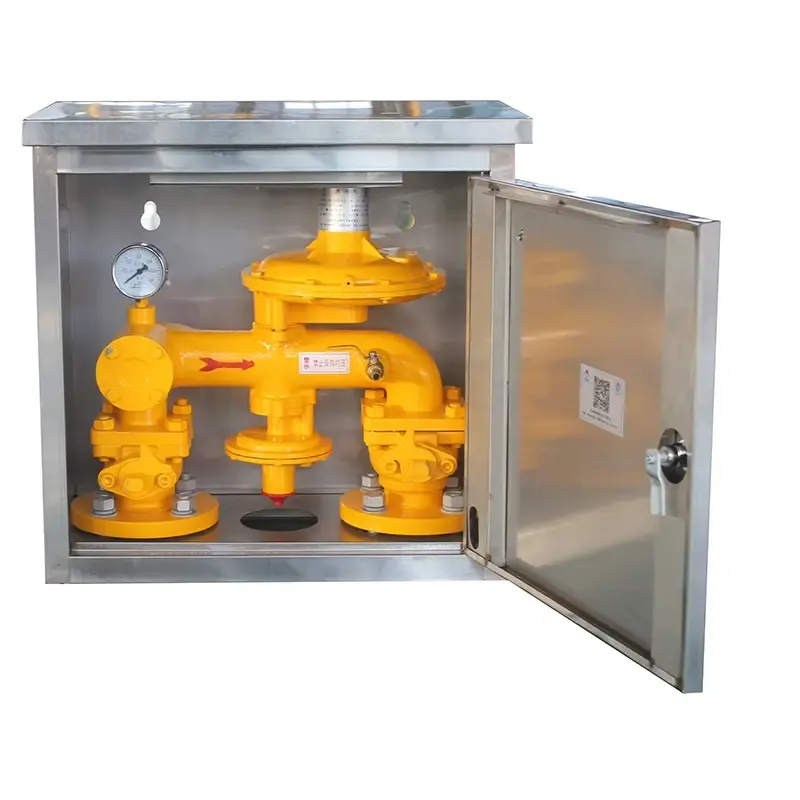
Dec . 11, 2024 11:03
Back to list
Ensuring Safety with Gas Pressure Relief Valves for Reliable Operations
Understanding Gas Safety Valves Ensuring Safety and Efficiency
Gas safety valves are critical components in various industrial and domestic applications, designed to prevent dangerous overpressure situations and ensure the safe operation of gas systems. The primary function of these valves is to protect equipment, infrastructure, and, most importantly, human life by maintaining pressure within safe limits. This article delves into the importance, types, working mechanisms, and maintenance of gas safety valves.
Importance of Gas Safety Valves
In any system that utilizes gas—whether it’s in a residential heating system, an industrial plant, or even in the transport of gas—maintaining proper pressure is crucial. Excessive pressure can lead to catastrophic failures, explosions, or leaks that pose significant risks to life and property. Gas safety valves act as a first line of defense against these dangers. By releasing excess pressure when it exceeds predefined limits, these valves ensure that the system operates efficiently without compromising safety.
They also play a pivotal role in compliance with safety regulations. Various regulatory bodies enforce strict guidelines regarding gas system safety, and the inclusion of appropriately rated safety valves is often mandatory to pass inspections. Consequently, investing in reliable gas safety valves not only safeguards lives but also contributes to adherence to legal standards.
Types of Gas Safety Valves
There are several types of gas safety valves, each designed to serve specific applications and needs
. Some of the most common types include1. Relief Valves These valves automatically release excess pressure from a system when it exceeds a set threshold. They can be used for both liquid and gas applications.
2. Safety Valves Often used in high-pressure systems, these valves open to discharge extra pressure quickly when it exceeds a specific limit, ensuring that the system remains safe.
gas safety valve

3. Pressure Relief Valves These valves can be adjusted to operate at different pressure settings and are commonly used in applications requiring precise pressure control.
4. Bursting Discs In some high-risk applications, a bursting disc may be used in conjunction with safety valves. It is a fail-safe device that ruptures under extreme pressure, allowing uncontrolled pressure to escape safely.
How Gas Safety Valves Work
The operation of gas safety valves is typically based on the principles of pressure and force balance. When the system pressure rises above the set point, the force exerted by the gas pressure on the valve’s diaphragm or piston overcomes the spring force holding it shut. This causes the valve to open, allowing gas to escape until the pressure decreases to a safe level. Once normal pressure is restored, the spring force closes the valve, preventing further gas discharge.
Maintenance and Safety Protocols
Regular maintenance of gas safety valves is crucial to ensure their reliability and effectiveness. Operators should adhere to the manufacturer’s recommendations regarding inspection and testing intervals. Procedures such as visual inspections, functional tests, and replacement of worn parts are essential to identify potential issues before they lead to failure.
Moreover, training personnel on the correct operation and maintenance of gas safety valves can significantly reduce risks. Implementing a clear safety protocol that includes emergency response measures in the event of valve failure enhances overall system safety.
Conclusion
Gas safety valves are indispensable in maintaining the safety and efficiency of gas systems. By understanding their importance, types, and operational mechanisms, users can ensure proper selection and maintenance, thus protecting people and infrastructure. As technology advances, the design and functionality of gas safety valves will likely continue to evolve, further enhancing safety in gas utilization systems. Investing in high-quality gas safety valves is not only a regulatory requirement but also a commitment to safety and reliability in gas management.
Latest news
-
Safety Valve Spring-Loaded Design Overpressure ProtectionNewsJul.25,2025
-
Precision Voltage Regulator AC5 Accuracy Grade PerformanceNewsJul.25,2025
-
Natural Gas Pressure Regulating Skid Industrial Pipeline ApplicationsNewsJul.25,2025
-
Natural Gas Filter Stainless Steel Mesh Element DesignNewsJul.25,2025
-
Gas Pressure Regulator Valve Direct-Acting Spring-Loaded DesignNewsJul.25,2025
-
Decompression Equipment Multi-Stage Heat Exchange System DesignNewsJul.25,2025

